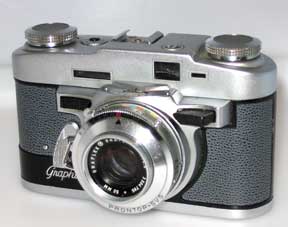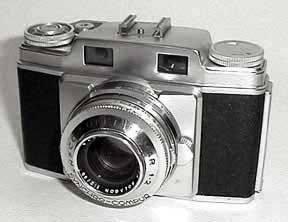35mm cameras with non removable lenses were very popular in the 1950s. They were less expensive than the Leica-type cameras and were very compact. They were equipped with leaf shutters which limited top speeds to a maximum of 1/500 sec. The advantage of the leaf shutter was that it would sync. with a electronic flash at any speed. Focal plane shutters could only sync up to about 1/60 sec. There were also several American-made 35s with focal plane shutters and proprietary interchangable lenses.
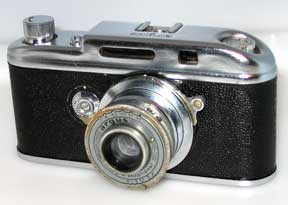
The Argus A3 used the same leaf shutter and lens as the Bakelite bodied Argus A introduced in the 1930s. But the A3, manufactured from 1940 to 1942 had a durable cast metal body with a nickle-plated top and lens barrel. Technically it isn't a rangefinder camera as it only have a viewfinder and focusing is by guesstimate. The A3 also has a primitive exposure meter -- the operator looks at a strip in the back of the top (just like the strip seen in the picture) and a approximate exposure setting can be seen. The A3 was ahead of its time design-wise but World War II ended the production and after the war the boxy Argus C3 became the company's flagship.
Argus C3
The Argus C3 was American made and introduced 35mm photography to the masses. It was introduced in 1939 and produced with a minimum of changes until 1966. It was made of Bakelite plastic with metal castings. This one was made in 1956 and is pretty much mint. The C3's nickname was "The Brick," for obvious reasons.
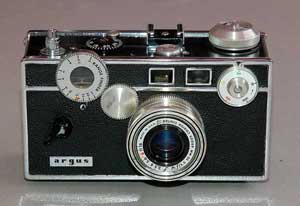
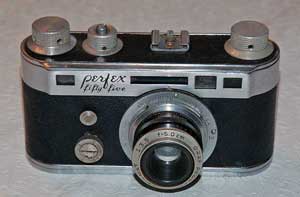
The Perfex was built by the Candid Camera Corporation of America in Chicago from 1940 until 1947. This is a prewar model. The body is cast and the lens is a 50mm f/3.5 Graf (of questionable quality). Some were equipped with the better f/2.8 Wollensak. The Perfex lens is screw mount but not interchangeable with Leica lenses. Leitz patents were still in effect before the war. I'm not sure if the company made accessory lenses. One interesting point is this is possibly the first camera made with a hotshoe flash (I have the flash, too). Another interesting aspect is that the shutter speed should be set when the shutter is uncocked rather than cocked. On Soviet Leica copies changing the shutter speed when uncocked can cause a train wreck. The speed setting dial is a collar around the shutter release. Notice the Leica-type advance and rewind knobs.
This Clarus MS 35 was manufactured in Minneapolis from 1946 to 1952. Some believe the camera's design roots were in the Perfex. It has a cast body and a 50mm Wollensak lens. 100mm and 35mm lenses also were available. The early models had all sorts of problems and developed a bad reputation. The later ones could produce decent images but by then the war was over and German and Japanese cameras were available. The Clarus pictured here was made after 1948 as it has a flash connection. Only about 20,000 Claruses were made.
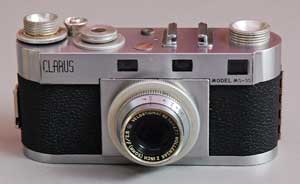
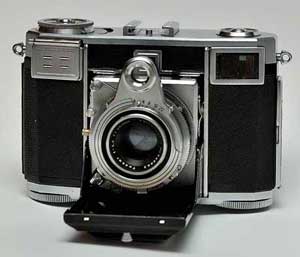
The Contessa was produced from about 1951 to 1955. It is a compact folding camera equipped with a very sharp Zeiss Opton 45mm Tessar f/2.8 lens. These cameras still command a good price today (2009) when compared to other fix lens rangefinders.
